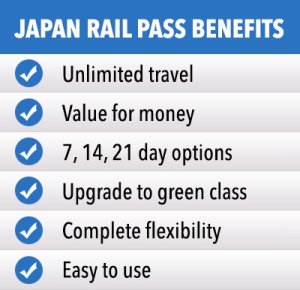Kanazawa Travel Guide

 Overview
Overview
Kanazawa is located on the island of Honshu and is the capital of Ishikawa Prefecture. In terms of wealth and size, it used to be the seat of the second most influential and powerful feudal family, the Maeda, and is home to several cultural and historical landmarks that compare in significance to those in Tokyo and Kyoto.
 When To Go
When To Go
- In autumn (September – November), Kanazawa tends to be rainy, with precipitation at its highest for the year. Average daily temperatures are below 10 degrees.
- In winter (December – February), temperatures fall below 5 degrees and rain is frequent. Expect snow about 10 to 20 days per month.
- Once spring kicks in (March – May), the weather becomes more pleasant, with daily temperatures ranging from 10 to 17 degrees, excellent for sakura viewing and other outdoor activities.
- During the summer months (June – August), the city is hot and humid, with daily temperatures of between 22 and 30 degrees. Rain is particularly prevalent in July.

Samurai District

Snow crab in the market
 Things To See
Things To See
Walk around the Kenrokuen Garden
Considered to be one of the top three landscape gardens in Japan, along with Korakuen in Okayama and Kairakuen in Mito, Kenrokuen Garden is a large, spacious garden built centuries ago by the Maeda clan. It is home to many beautiful and colourful flowering trees, such as plums, cherries and maples, which provide the garden with a variety stunning looks at different times of the year.
Go to the Ninjadera
Also known as the Myoryuji Temple, the Ninjadera is a temple constructed by the Maeda clan during the Edo Period. It has several defensive features, such as secret rooms, long and maze-like corridors, hidden tunnels, trap rooms, and disguised military outposts. Its complex escape network allowed everyone in the castle to effectively defend themselves or escape when the castle came under attack.
Visit the Seisonkaku Villa
A samurai mansion built by a former Maeda leader as a gift for his mother, the Seisonkaku Villa boasts an elegant style that features unique and intricate work on the roof, doors and walls, and the interiors are adorned with tatami flooring.
Explore the Kanazawa Castle
The Kanazawa Castle served as the seat of the ruling Maeda family during the feudal times of the Edo Period. Through the centuries, it has suffered a number of tragedies, including several fires that led to its destruction. It has been restored in recent years and its castle grounds are open to the public.

Kenrokuen

Kanazawa castle
 Where To Explore
Where To Explore
- Nagamachi Samurai District – Home to old and restored samurai residences, the Nagamachi District offers a peek into the lifestyle and culture of the past. Many of the houses and buildings, such as the Nomura-ke, are now museums displaying various samurai artifacts and are open to the public.
- Nishi Chaya District – For tourists looking to learn more about Kanazawa’s history and culture, the Nishi Chaya District has a museum called the Nishi Chaya Shiryokan which offers free tours (in Japanese) of the area. It also has some cafes, shops and restaurants where visitors are entertained by song and dance performances by geisha.
- Omicho Market – The biggest fresh produce market in Kanazawa for centuries now, Omicho Market is a bustling district made up of hundreds of stalls and shops that sell local produce, seafood, flowers and other products. It has many restaurants that serve the city’s specialty dish: rice bowl with freshly-caught seafood toppings.
- Higashichaya Old Town – The largest old town tea district in Kanazawa, Higashichaya Old Town has streets lined with traditional-style buildings and cafes and shops (such as the Hakuza Gold Leaf Store) that offer a wide selection of tea products; a museum (the Shima Teahouse) that showcases musical instruments, clothes and other objects used by geisha; and tea houses (such as the Kaikaro Teahouse) where you can be part of a traditional tea ceremony.
 Getting Around
Getting Around
The city of Kanazawa is served by several bus companies that provide easy access to its many landmarks and attractions. For tourists, the Kanazawa Loop Bus is highly recommended as it covers several of the most important sightseeing spots. A one-day bus pass that costs 500 yen gives you an unlimited number of rides on all the buses (loop bus and regular bus).












